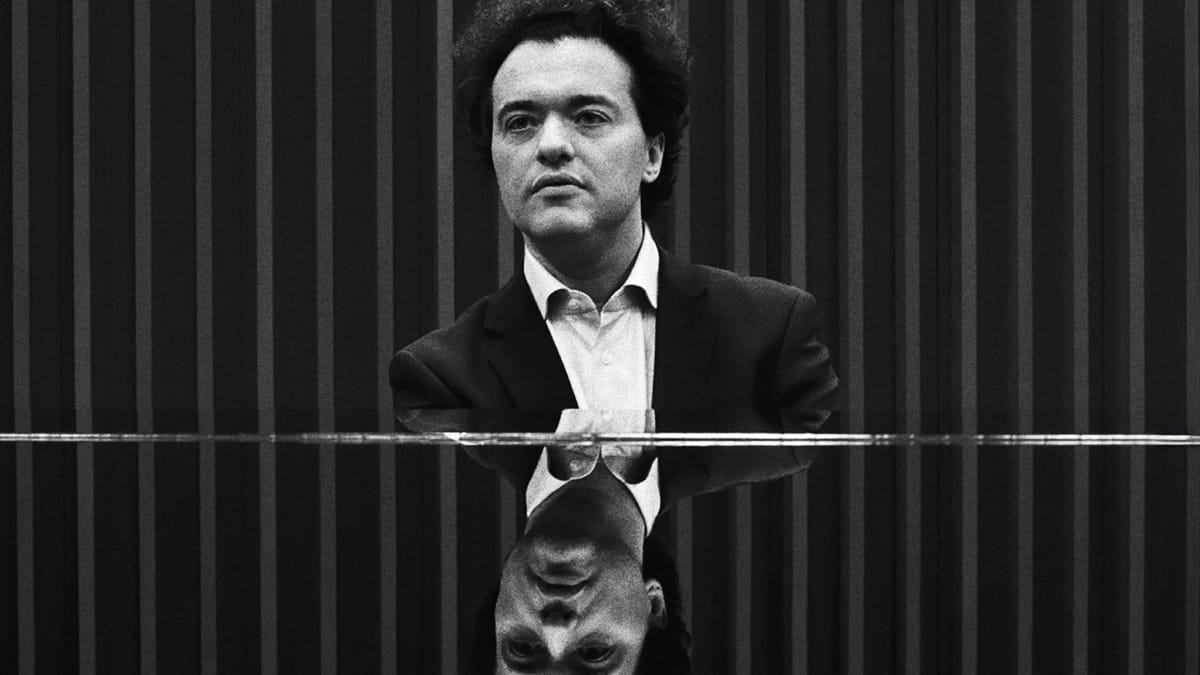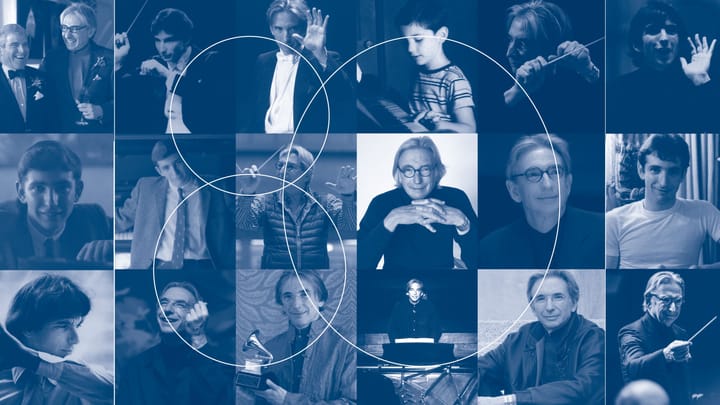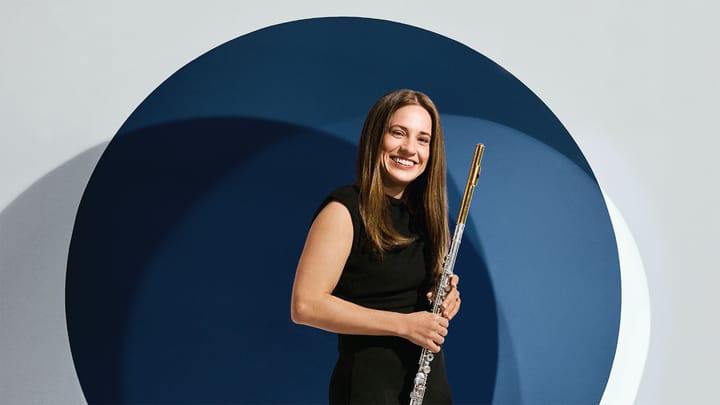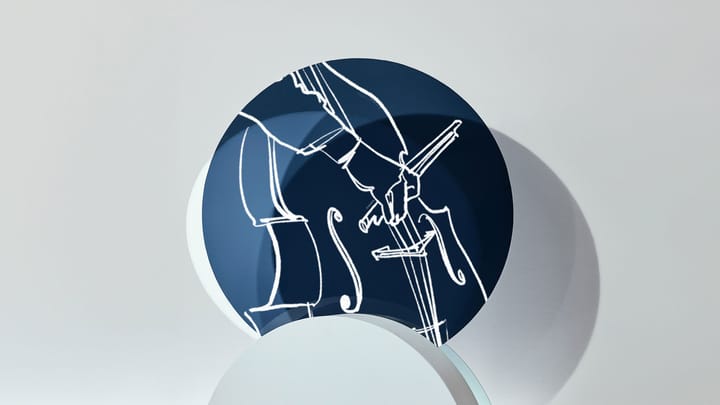In This Program
The Concert
Sunday, April 20, 2025, at 7:30pm
Evgeny Kissin piano
Johann Sebastian Bach
Partita No. 2 in C minor for Keyboard, BWV 826 (ca. 1727)
Sinfonia
Allemande
Courante
Sarabande
Rondeau
Capriccio
Frédéric Chopin
Nocturne in C-sharp minor, Opus 27, no.1 (1835)
Nocturne in A-flat major, Opus 32, no.2 (ca. 1837)
Scherzo No. 4 in E major, Opus 54 (1843)
Intermission
Dmitri Shostakovich
Piano Sonata No. 2 in B minor, Opus 61 (1943)
Allegretto
Largo
Moderato (con moto)–Allegretto con moto–Adagio–Moderato
Dmitri Shostakovich
Prelude and Fugue in D-flat major, Opus 87, no.15 (1951)
Prelude and Fugue in D minor, Opus 87, no.24 (1951)
Presenting Sponsor of the Great Performers Series

This concert is generously sponsored by the K. Hart Smith Fund.
Program Notes
Partita No. 2 in C minor, BWV 826
Johann Sebastian Bach
Born: March 21, 1685, in Eisenach, Germany
Died: July 28, 1750, in Leipzig
Work Composed: ca. 1727
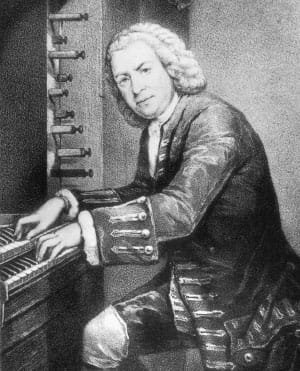
Johann Sebastian Bach produced three sets of keyboard suites, each consisting of six works: the grandly plotted English Suites, apparently assembled around 1725; the more intimate French Suites, following shortly thereafter; and the magisterial Partitas, which appeared in individually published editions from 1726 to 1730 and were then assembled into a collected edition in 1731. Partita No. 2 was released in 1727, although it may have been composed some while earlier.
Except for the individual parts of an early cantata, the Partitas were Bach’s first published pieces. He designated their collected edition as Opus 1—although opus numbers would never figure in his music after that—and titled the set Clavier-Übung (Keyboard Practice), a somewhat traditional name already used by previous German composers and equated with such terms as partita, parthia, partie, or so on. The full title serves as a guide to the collection: “Keyboard Practice consisting of Preludes, Allemandes, Courantes, Sarabandes, Gigues, Minuets, and other Galanteries Made for the Pleasure of Admirers.”
The Second Partita begins with a tripartite Sinfonia: a grand preamble (Grave adagio) suggesting the opening of a classic “French overture”; then, without a break, a two-voiced Andante in which a highly embellished melody ambles above a walking bass line; and, again without a break, a vigorous two-voiced fugue (Allegro). There follow an Allemande, rich in elegant counterpoint; a Courante, with intimations of canonic imitation; and a Sarabande, its melody incorporating elaborate ornamentation. The final two movements are not usual parts of a standard suite. The Rondeau involves an opening idea that recurs to among contrasting episodes; it is set in 3/8 time, perhaps to make up for a missing gigue, which would have had similar metrics. The Partita ends with an extraordinary movement, a virtuosic Capriccio in which hands leap to negotiate the prominent intervals of the tenth, which is baked into the principal melody, and the second half presents the material upside down compared to the first half, in case you weren’t already sufficiently impressed.
Bach’s Partitas gained a reputation for exorbitant difficulty. In 1802, his biographer Johann Nikolaus Forkel wrote: “This work caused quite a sensation among his contemporaries in the world of music; such splendid keyboard compositions had never previously been seen or heard. Whoever learnt to perform any of these pieces to a high standard could make his fortune in the world.”
Nocturne in C-sharp minor, Opus 27, no.1
Nocturne in A-flat major, Opus 32, no.2
Scherzo No. 4 in E major, Opus 54
Frédéric Chopin
Born: February 22 or March 1, 1810, in Żelazowa Wola, Poland
Died: October 17, 1849, in Paris
Works Composed: Nocturne in C-sharp minor—1835. Nocturne in A-flat major—ca. 1837. Scherzo No. 4 in E major—1843.
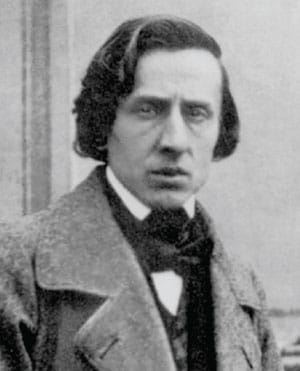
Born a bit west of Warsaw to a French father and a Polish mother, Frédéric Chopin settled in France in 1831. In Paris he was greeted by a circle of artistic luminaries that included Bellini, Meyerbeer, Berlioz, Liszt, Heinrich Heine, and Victor Hugo—and the cross-dressing author George Sand, who became his intimate companion. His pianistic style captivated everyone. “Let us imagine,” Robert Schumann wrote, “that an Aeolian harp had all the scales and that an artist’s hand had mingled them together in all kinds of fantastic decorations, but in such a way that you could always hear a deeper fundamental tone and a softly singing melody—there you have something of a picture of his playing.” This was Romanticism itself, and Chopin’s status was further enhanced by his exotic origins, his refined but aloof character, and his ongoing struggle with tuberculosis.
The piano nocturne was a relatively new genre when Chopin started writing them around 1830. The direct progenitor of the Chopinesque nocturne was John Field, an Irish pianist and composer whose nocturnes, the earliest of which dated to 1812, usually displayed a gracious melody over a broken-chord accompaniment. Chopin played these works, though reports suggest that he enhanced their melodies by improvising much decoration. He published 18 nocturnes in his lifetime, invariably in sets of two or three (a few others were issued posthumously), tracing an emotional landscape far surpassing what Field had achieved. The Opus 27 C-sharp minor Nocturne is a cryptic piece, the stark left-hand figuration of its opening (Larghetto, pianissimo) wending within a few measures from C-sharp minor to cadence in E major and then moving on from there, its gloom turning aside for a few phrases of noble heroism in the middle (shouted out at fortississimo) before returning to dejection and, at the end, transforming into a peaceful lullaby. Wrote the music critic Henry Theophilus Finck in 1899: “It embodies a greater variety of emotion and more genuine dramatic spirit in four pages than many operas in four hundred.”
The Opus 32 Nocturne in A-flat major was apparently written about two years later (precise chronology is elusive with many of Chopin’s compositions). This is a more straightforward nocturne, rather in the Field mold (if more intricate) or suggesting the spirit of a Mendelssohn “song without words.” Its opening section (effectively repeated as its closing section) is indeed songlike, and its central portion, though contrasting in the minor mode and working up to the marking più agitato (more agitated), is far from Chopin at his most tempestuous.
From about 1832 to 1843, Chopin composed four relatively extended, single-movement works he titled Scherzo. The word means “joke,” and composers typically assigned it to music that was jolly or mercurial. Chopin’s attaching it to such emotionally charged pieces perplexed people as these works began to disseminate. Franz Liszt wrote that these pieces “paint a concentrated exasperation dominated by a despair that is now ironic and again haughty.” So it is with the first three of Chopin’s scherzos, but the Fourth takes a different tack. “We find him here in a happier, lighter-hearted, more contented frame of mind,” wrote G.C. Ashton Jonson in A Handbook to Chopin’s Works (1905). “Here a delightful independence replaces defiance, and a gentle raillery reigns instead of the sarcasm and invective.” The main theme of Scherzo No. 4 has a skipping quality, and flying finger-work, sometimes marked leggiero (lightly), sparkles like the spray of a fountain. The piece sustains its good nature practically throughout its 11 minutes, its occasional outbursts of passion quickly returning to geniality. Even its central section, with its opportunity for contrast, differs from the overriding character by becoming somewhat more pensive, but not even reaching melancholy.
Piano Sonata No. 2 in B minor, Opus 61
Prelude and Fugue in D-flat major, Opus 87, no.15
Prelude and Fugue in D minor, Opus 87, no.24
Dmitri Shostakovich
Born: September 25, 1906, in Saint Petersburg
Died: August 9, 1975, in Moscow
Works Composed: Sonata No. 2—1943. Preludes and Fugues—1951.

As an emerging musician, Dmitri Shostakovich was torn over whether he should focus on composition or performance. An important figure in helping him prioritize his talents was Leonid Nikolayev, head of the Petrograd (Leningrad) Conservatory’s piano department and Shostakovich’s piano teacher beginning in his sophomore year. When he had been a pupil of Vasily Safonov (in piano) and Mikhail Ippolitov-Ivanov (in composition), Nikolayev had faced the same challenge.
Shostakovich and his family had been evacuated from Leningrad to Kuibyshev (now Samara), deep within Russia’s interior, when Nikolayev died, in October 1942. Most of the Second Piano Sonata was written there, and Shostakovich designated Nikolayev as its dedicatee. The Allegretto first movement is developed out of three basic ideas, which sometimes overlap: a falling-thirds motif, often heard literally but sometimes a point of departure to be stretched into something wider through creeping chromaticism; expanses of moto perpetuo, with unremitting swirls of 16th notes; and a march, on one hand foursquare yet rendered macabre through the composer’s signature harmonic feints. The second movement (Largo, and marked at the opening molto rubato) is characterized by spare textures. One might think of it as a waltz that never comes close to dancing, perhaps one played in the haunted ruins of a ballroom. The finale is cast as a theme and variations, with the theme being enunciated in a long-spanning monophonic line, expanding into harmonized form only when the first of the nine variations begins. At the very end, scurrying 16th notes—a memory of the first movement—overlap with the variations theme.
In 1950, Shostakovich chaired the jury of the inaugural International Johann Sebastian Bach Competition in Leipzig (then East Germany), established to mark the bicentennial of that composer’s death. The pianists were required to play one of the 24 Prelude and Fugues from Bach’s Well-Tempered Clavier, but one competitor, Russia’s Tatiana Nikolayeva, offered to play whichever the jury chose, as she had them all under her fingers. She won the Gold Medal and embarked on a close, 25-year friendship with Shostakovich. An upshot was Shostakovich’s writing his own set of 24 preludes and fugues—like Bach’s, in all the major and minor keys—which he carried out from October 10, 1950, through February 25, 1951. “I was watching and listening to them being born,” Nikolayeva recalled in 1992. “When he wrote the piano pieces, he would call me almost every day. I’d come and he’d play excerpts to me. I then started playing them myself and played them to him.” He dedicated the set to her, and she performed them often (including their concert premiere, in 1952 in Leningrad) and recorded the set four times, the last one as a film. In fact, this was the last music she ever played. On November 13, 1993, while interpreting the cycle at San Francisco’s Herbst Theatre, she suffered a cerebral hemorrhage in the midst of the Fugue in B-flat minor. Through sheer force of will, she brought the phrase to an acceptable cadence, and she died nine days later at California Pacific Medical Center.
Of the two pairs heard in this concert, the one in D-flat major opens with a waltzing prelude—very approachable—before launching into a ferocious fugue with constantly shifting meter, its nearly atonal subject (the term used for the theme of a fugue) encompassing 11 of the 12 possible pitches of a scale; that 12th note keeps its silence until measure 5. The D-minor Prelude and Fugue, which closes Shostakovich’s set, begins with an imposing, ruminative prelude, followed by a long, involved double fugue—each of the two subjects is worked out in its own exposition before being developed in combination. This movement references Bach at his most contrapuntally brilliant, making use of such complex techniques as triple invertible counterpoint (briefly) and double stretto (both subjects sounded overlapping with themselves).
—James M. Keller
About the Artist
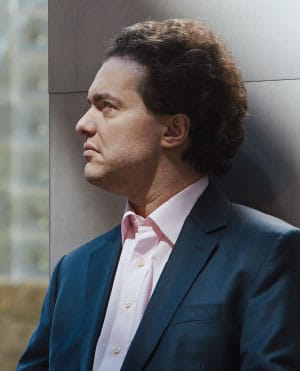
Evgeny Kissin
Evgeny Kissin was born in Moscow in 1971 and began to play by ear and improvise on the piano at the age of two. At age six, he entered the Moscow Gnessin School of Music, where he was a student of Anna Pavlovna Kantor, his only teacher. At age 10, he made his concerto debut and gave his first solo recital one year later. He came to international attention in 1984 when, at age 12, he performed both of Chopin’s piano concertos in the Great Hall of the Moscow Conservatory, recorded live by Melodia, and released as a two-LP album. He made his San Francisco Symphony debut on the Great Performers Series in February 1994.
Mr. Kissin has received the Crystal Prize of Osaka Symphony Hall for the Best Performance of the Year; the Musician of the Year Prize from the Chigiana Academy of Music; the Triumph Award for his outstanding contribution to Russia’s culture; an honorary doctorate from the Manhattan School of Music; an honorary membership of the Royal Academy of Music in London; and an honorary doctorate of letters from Hong Kong University.
Kissin’s newest release is an album featuring Beethoven sonatas on Deutsche Grammophon. His recording of works by Scriabin, Medtner, and Stravinsky on RCA Red Seal won him a Grammy Award, as did his recording of Prokofiev’s Piano Concertos Nos. 2 and 3, and he was a special guest at the 1992 Grammy Awards ceremony.
This season, Kissin returns to tour North America, Europe, and Asia. In the fall, he visited Taipei, Seoul, and major cities across Japan. In addition to San Francisco, his current tour takes him to Vancouver; Los Angeles; Boston; Washington, DC; Cleveland; Chicago; and New York, culminating with three performances at Carnegie Hall commemorating the 50th anniversary of Shostakovich’s death.

